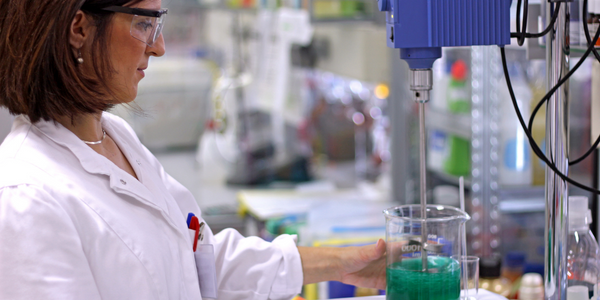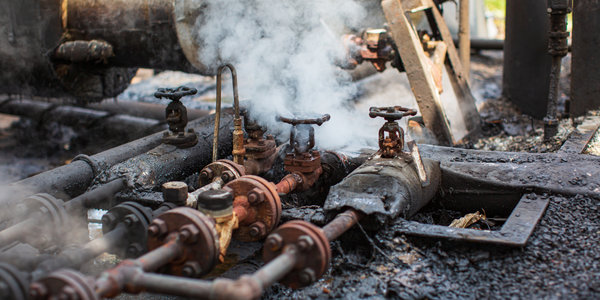Download PDF
IoT Implementation in Defense Research: A Case Study of TNO Prins Maurits Laboratory
Applicable Functions
- Product Research & Development
Use Cases
- Onsite Human Safety Management
The Challenge
TNO Prins Maurits Laboratory (TNO-PML) is a renowned institution in the field of defense research, providing scientific and technical advice in areas such as explosion safety, munition effects, ballistic protection, and survivability of weapon platforms. The laboratory combines experimental facilities with numerical analysis capabilities to deliver high-quality research. However, the challenge lies in the application of these research findings in real-world scenarios. The main applications of their research tool, AUTODYN, include terminal ballistics, injury biomechanics, safe field storage of ammunition and explosives, effects of bomb attacks and explosions onto structures, explosive materials processing, and mineblast modeling. The challenge is to effectively utilize these applications in a way that enhances the safety and efficiency of defense operations.
About The Customer
TNO Prins Maurits Laboratory (TNO-PML) is a leading institution in the field of defense research, based in the Netherlands. With a proven track record of high-quality research, TNO-PML provides scientific and technical advice in various areas, including explosion safety, munition effects, ballistic protection, and the survivability of weapon platforms. The laboratory combines experimental facilities with numerical analysis capabilities to deliver comprehensive and practical solutions. TNO-PML's main applications of their research tool, AUTODYN, include terminal ballistics, injury biomechanics, safe field storage of ammunition and explosives, effects of bomb attacks and explosions onto structures, explosive materials processing, and mineblast modeling.
The Solution
To address these challenges, TNO-PML has been actively involved in research relevant to gas explosions and blast effects, in collaboration with Century Dynamics. They have been using AUTODYN, a versatile tool that allows for the simulation of a wide range of scenarios. This includes terminal ballistics related to shaped charges, kinetic energy projectiles, and armor, injury biomechanics such as blast wave effects on the human body and blunt trauma, and the effects of bomb attacks and explosions onto structures. Additionally, AUTODYN is used for the safe field storage of ammunition and explosives, explosive materials processing, and mineblast modeling. This comprehensive approach allows TNO-PML to apply their research findings in a practical and effective manner, enhancing the safety and efficiency of defense operations.
Operational Impact
Related Case Studies.

Case Study
Wearables for Connected Workers
Together, Honeywell and Intel have developed a IoT proof of concept (PoC) for the Connected Worker. The Connected Worker can take many forms - factory laborer, mine worker, first responder, firefighters and more. For each environment and worker role, a different selection of sensors may be appropriate to provide the most meaningful IoT-fueled dataset to represent that individual worker asset. As with most IoT solutions, it is critical to avoid being overwhelmed by a steady stream of meaningless data. Rather, it is essential to send select actionable intelligence to the cloud for visualization and customized alert notifications. The downside is that data from individual wearable devices - if viewed independently - can potentially cause false alarms and contribute to inefficiencies in a manpower as a result. Fusing sensor technology with big data processing (hub/gateway), analytics - all in the cloud - is the key to improving local intelligence as well as remote visualization of actionable intelligence.

Case Study
Underground Mining Safety
The goal was to produce a safety system to monitor and support underground mining operations; existing systems were either too simple (i.e. phone line) or overly complex and expensive, inhibiting deployment, and providing little-to-no support in event of an accident. Given the dangerous nature of the mining work environment and the strict regulations placed on the industry, the solution would have to comply with Mine Safety and Health Administration (MSHA) regulations. Yet the product needed to allow for simple deployment to truly be a groundbreaking solution - increasing miner safety and changing daily operations for the better.

Case Study
Facility Management Solution in Construction Industry
In the construction of Crown Towers in Perth, hundreds of workers enter and exit the construction site each day, totalling into thousands by the completion of the project. All of these workers perform different tasks and come from different agencies, making it difficult for supervisors to track who does what, when, and where on such a large-scale site. An easy-to-use access, security and facility management solution was required.

Case Study
Industrial Workforce Mobility for Improved Safety & Operations
Huntsman Corporation, a global manufacturer and marketer of differentiated chemicals, undertook an aggressive program to eliminate injuries, product defects, and environmental releases at their Port Neches facility. Termed “Project Zero”, this program required a completely mobile solution to empower operations and maintenance personnel to capture defects, track work progress and make process and safety related decisions in real-time.

Case Study
Improving Factory Worker Posture
A 49 year old factory worker with long-standing low back pain was referred to a ViMove clinic for assessment and treatment. The worker’s low back pain had been managed and resolved with acupuncture in the past. The patient reported severe low back pain worse in the morning after prolonged rest. He also had trouble straightening up and experienced constant stiffness and pain.

Case Study
WEST TEXAS GAS TRUSTS WIN-911 ALARM NOTIFICATION SOFTWARE
It became clear that the SCADA system was not an infallible means ofmonitoring field stations; the systems would sometimes lose connection with the host computer. This caused delays in personnel response to alarms and increased the risk of severe warnings not being received before corrective actions could be implemented. As a precaution, the alarm points had to be visually monitored and staff would be required to call the appropriate personnel if an alarm came through. Regulations wereestablished for timely reporting. The management at West Texas Gas quickly determined that a secondary alarm support system needed to be installed. They were seeking something that would be able to monitor variable tags from the OPC server as well as monitor custom tags that were built into the existing SV32 SCADA system to observe and report flare volumes.





